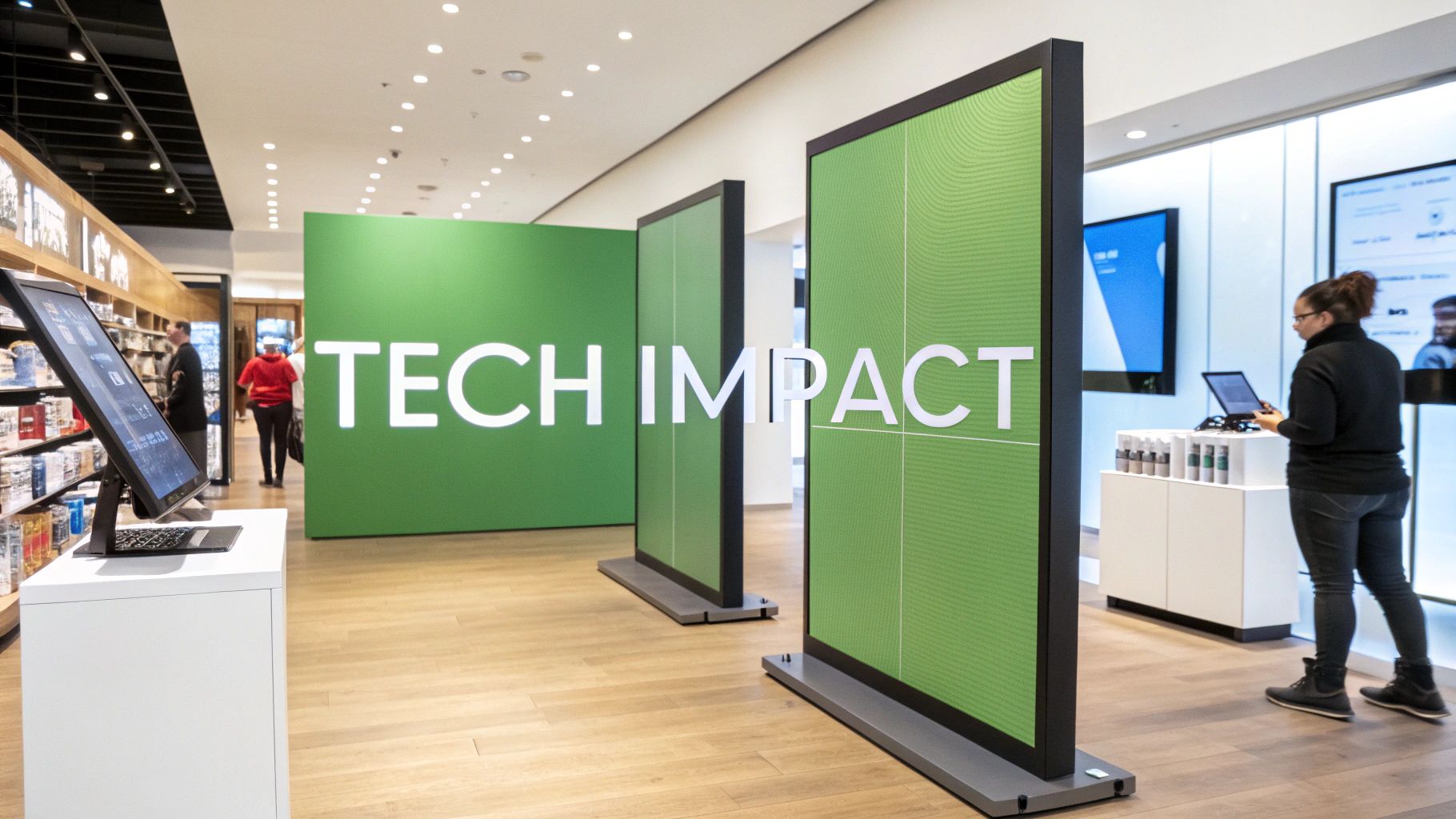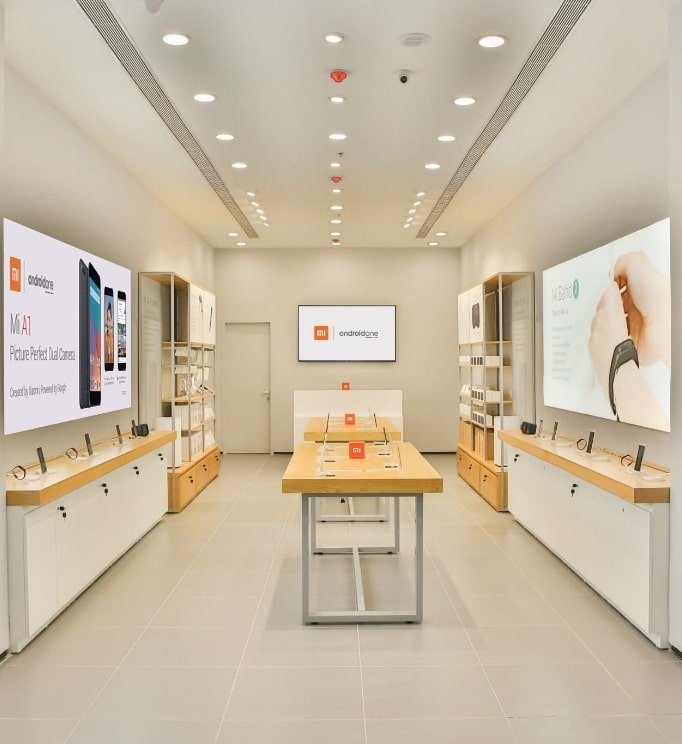Unlocking the Power of Shopper Insights in Modern Retail

Shopper insights are now crucial for retailers looking to succeed in a competitive market. These insights provide a key understanding of consumer purchasing decisions. It’s not just about tracking sales; it’s about understanding the motivations and behaviors that drive shoppers.
Understanding why a shopper chooses one brand over another, or their preference for in-store versus online shopping, offers valuable information. This knowledge helps retailers refine strategies and connect with their target audience. These insights are reshaping how retailers approach everything from product selection and store layout to the overall customer experience.
The Evolution of Shopper Insights
The use of shopper insights has changed significantly. It’s moved beyond basic sales tracking to sophisticated behavioral analysis. Initially, retailers focused on what products were selling.
Today’s top retailers are digging deeper, trying to understand the why behind those purchases. This shift allows for more targeted marketing campaigns, personalized promotions, and improved customer experiences. For example, these insights can inform retailers about customer needs and pain points. This allows them to create more relevant and helpful products and services, building a stronger retailer-consumer connection.
The Real-World Impact of Shopper Insights
There’s clear evidence of the return on investment (ROI) from dedicated shopper insights programs. Many retailers have seen significant improvements in key metrics by understanding their shoppers’ decision journeys.
These improvements include higher conversion rates, increased average basket size, and stronger customer loyalty. Shopper insights also reveal that despite the growth of e-commerce, in-store shopping remains a global preference. According to PwC’s February 2023 Global Consumer Insights Pulse Survey, 43% of consumers prefer shopping in-store.
This preference has remained consistent despite fluctuating digital trends, highlighting the enduring value of the in-store experience. This information emphasizes the importance of a robust omnichannel strategy. Retailers must cater to both physical and digital shoppers, understanding the nuances of each channel to optimize strategy and maximize success.
Capturing Meaningful Shopper Insights That Actually Drive Results

Retailers are constantly seeking ways to move beyond traditional methods like surveys and focus groups to gain truly actionable shopper insights. Understanding which research methods yield the most impactful results is key to success in today’s competitive market. This involves comparing established research approaches with emerging technologies.
Modern Methods For Gathering Shopper Insights
AI-powered analytics tools, for example, can analyze massive datasets. These tools identify patterns and trends in shopper behavior that manual analysis might miss. This data can then be used to personalize marketing campaigns and optimize product placement within stores.
Mobile tracking and in-store sensors offer another avenue for gathering real-time data. These technologies provide valuable information about how shoppers navigate physical spaces. This can be instrumental in optimizing store layouts and creating a more seamless shopping experience.
This stands in contrast to older approaches, like focus groups. These can be costly, time-intensive, and may not always provide a fully accurate representation of true consumer behavior.
Designing Effective Research Studies
Effective shopper insights initiatives begin with well-designed research studies. These studies need to directly address your core business questions. Start by clearly defining the problem you’re trying to solve.
Are you trying to understand why a specific product isn’t performing well? Are you looking to boost customer loyalty? Once your objective is clear, you can choose the most appropriate research methodology.
This often involves combining multiple approaches. For instance, using both online surveys and in-store observations can provide a more holistic view of shopper behavior. You might find this resource helpful: How to master your retail strategies.
Remember the ethical implications of collecting and using consumer data. Transparency and respect for privacy are paramount.
Choosing The Right Methodology For Your Needs
There’s no one-size-fits-all solution for gathering shopper insights. The best method will always depend on your specific objectives, available resources, and timeframe.
A quick, cost-effective approach might suffice for some projects, while others may require more in-depth investigation. Careful selection ensures that the insights gathered are not only valuable but also directly contribute to business growth.
To help illustrate the diverse options available, let’s examine a comparison of different methods:
To help you navigate the various options, the following table provides a comparison of different shopper insight collection methods:
Shopper Insight Collection Methods: Strategic Comparison
This table compares different methods for collecting shopper insights across key factors including cost, implementation time, data quality, and best use cases.
| Method | Cost Level | Implementation Time | Data Quality | Best For |
|---|---|---|---|---|
| Surveys | Low to Medium | Short | Moderate | Gathering broad feedback, understanding general preferences |
| Focus Groups | Medium to High | Medium | Moderate to High | Exploring complex issues, gaining in-depth qualitative insights |
| AI-Powered Analytics | Medium to High | Medium to Long | High | Identifying patterns and trends, personalizing marketing efforts |
| Mobile Tracking | Medium | Short to Medium | High | Understanding in-store behavior, optimizing store layouts |
| In-Store Sensors | High | Medium to Long | High | Analyzing real-time traffic flow, optimizing product placement |
This comparison highlights the trade-offs between different approaches. While AI-powered analytics and in-store sensors provide high-quality data, they can be more expensive and require longer implementation times. Conversely, surveys offer a quick and cost-effective way to gather general feedback. Choosing the right balance of cost, speed, and depth of insight is essential for maximizing the impact of your research efforts.
Ultimately, gathering shopper insights is about making informed decisions. Understanding the diverse tools and techniques at your disposal allows you to choose the methods that will best drive business growth.
Decoding Generational Shopping Behaviors for Targeted Retail Success

Understanding generational shopping behaviors is crucial for retail success. Each generation, from Gen Z to Baby Boomers, has distinct preferences and expectations. This creates both challenges and opportunities for retailers. By using shopper insights, we can move past stereotypes and understand what builds loyalty for each age group.
Understanding the Generational Divide in Shopping
Millennials often prioritize convenience and digital engagement. They embrace online shopping and expect seamless integration between online and in-store experiences. Gen Z, however, values brand authenticity and social impact. They support brands that reflect their values and engage with them on social media.
This difference highlights the importance of understanding each generation’s nuances. A marketing campaign that works for Gen Z might not resonate with Baby Boomers. This underscores the importance of tailoring strategies based on shopper insights. The 2023 Global Shopper Study by Zebra Technologies provides valuable data, highlighting shopper satisfaction across generations. The study shows high satisfaction across all age groups, with 89% of Gen Z and 87% of Millennials reporting positive experiences. Explore this topic further.
Technological Innovations and Generational Preferences
Technology shapes generational shopping behaviors. Gen Z and Millennials are comfortable using mobile apps, online marketplaces, and social commerce platforms. They expect a seamless digital experience across all channels. Older generations, like Gen X and Baby Boomers, are increasingly adopting digital tools while often still preferring traditional shopping methods.
Retailers must balance digital and physical experiences. A strong omnichannel strategy is essential, seamlessly integrating in-store, online, and mobile shopping platforms. The Zebra Technologies study found that 69% of Gen Z and 75% of Millennials use both online and in-store channels, emphasizing the growing importance of an omnichannel approach.
Targeted Retail Success Through Personalized Experiences
While generational targeting is valuable, recognizing individual differences within each generation is crucial. Not all Millennials or Gen Z shoppers are alike. They have diverse needs and motivations. This is where personalized experiences become key.
By using shopper insights, retailers can move beyond general generational trends. They can develop personalized recommendations, targeted promotions, and customized shopping experiences that resonate with individual shoppers. This fosters deeper connections, builds loyalty, and drives sales. Focusing on individual preferences alongside generational trends allows for stronger connections and higher customer satisfaction. This ultimately leads to targeted retail success by creating a truly personalized and engaging shopping journey.
Building Seamless Experiences: Shopper Insights for Omnichannel Mastery

The omnichannel journey presents a complex landscape for today’s retailers. Shoppers effortlessly navigate between online and physical stores, creating a dynamic environment filled with both opportunities and challenges. Shopper insights are crucial for understanding these complexities, allowing retailers to identify friction points and unlock potential within this interconnected shopping experience. By understanding how shoppers interact with various touchpoints, retailers can craft a truly seamless experience.
Mapping the Cross-Channel Customer Journey
Understanding the customer journey across different channels is paramount to omnichannel mastery. Where do shoppers begin their product research? How do they transition between online browsing, visiting physical stores, and engaging on their mobile devices? These are critical questions for retailers to consider.
Shopper insights provide a roadmap to these journeys. Data analysis, for instance, might reveal that many customers begin their research online but ultimately prefer to complete their purchase in a physical store. This valuable insight allows retailers to optimize each touchpoint, ensuring a more satisfying customer experience. This might involve providing accurate inventory information online and offering convenient in-store pickup options.
Uncovering Behavior Patterns Across Multiple Touchpoints
Shopper behavior often involves interactions across multiple touchpoints. A customer might browse products on their smartphone, add items to their online shopping cart, and then finalize the purchase later on their desktop computer. Shopper insights help decipher these complex patterns, providing valuable data for retailers.
This information empowers retailers to develop more targeted strategies. For example, retailers can implement retargeting campaigns for customers who abandon their online carts. These campaigns can remind shoppers about the items they were interested in and offer incentives to complete the purchase, leading to higher conversion rates and increased sales. For further insights, check out How to master your retail strategy and improve conversion rates.
Implementing Cohesive Strategies That Drive Conversions
A consistent brand experience across all channels is essential for omnichannel success. Shopper insights play a key role in developing these cohesive strategies.
This includes aligning inventory, pricing, and promotions across all channels. Imagine a customer finding a product online at one price and then discovering a different price for the same product in-store. Such inconsistencies can erode customer trust and negatively impact sales. Shopper insights help avoid these pitfalls. By maintaining consistency, retailers build a seamless and positive shopping experience that encourages conversions regardless of where the purchase occurs.
Optimizing the Omnichannel Experience With Shopper Insights
Leading retailers leverage shopper insights to continually refine their omnichannel strategies. This involves optimizing the channel mix, aligning inventory strategies, and delivering personalized experiences. Personalization is particularly crucial in today’s omnichannel environment.
By understanding individual shopper preferences, retailers can tailor product recommendations, promotions, and even store layouts to create a more engaging and relevant experience. This personalized approach fosters increased customer loyalty and strengthens a retailer’s competitive advantage.
Critical Shopper Insights Metrics for Omnichannel Excellence
To further understand the importance of data-driven decision making, the following table highlights key metrics for evaluating and improving your omnichannel approach. This table presents essential metrics retailers should track to measure and optimize their omnichannel strategy effectiveness.
| Metric Category | Key Metrics | What It Measures | Improvement Actions |
|---|---|---|---|
| Customer Journey | Cross-channel conversion rates, Channel attribution, Customer lifetime value (CLTV) | How customers interact with and convert across different channels | Optimize each touchpoint for seamless transitions and personalized experiences |
| Inventory Management | Inventory turnover rate, Stockout rate, Fulfillment cost | Efficiency of inventory management across all channels | Implement real-time inventory visibility and optimize fulfillment strategies |
| Customer Experience | Customer satisfaction (CSAT), Net Promoter Score (NPS), Customer effort score (CES) | Overall customer satisfaction with the omnichannel experience | Address pain points, personalize interactions, and streamline the shopping process |
| Sales Performance | Average order value (AOV), Revenue per channel, Return on investment (ROI) | Effectiveness of the omnichannel strategy in driving sales and profitability | Optimize pricing, promotions, and product assortment based on shopper insights |
By tracking these metrics and implementing data-driven strategies, retailers can create a truly seamless omnichannel experience that cultivates customer loyalty and drives sustainable business growth.
Global Shopper Insights: Navigating Regional Retail Differences
Retail success increasingly depends on understanding global shopper behaviors. Analyzing data reveals how culture, economics, and infrastructure shape customer preferences. A single global strategy likely won’t work. You might be interested in: How to master your site structure.
Regional Variations in Shopping Behavior
Shopper insights highlight distinct regional differences. Preferred payment methods, for example, can vary significantly. While mobile payments are common in some Asian markets, other regions may prefer credit cards or cash.
Delivery expectations also differ. Some shoppers expect same-day delivery, while others accept longer wait times. Shopping frequency and channel preference (online versus brick-and-mortar) show regional variations, too. Recognizing these nuances is key for adapting retail strategies.
Global shopper sentiment reports, such as the 2023 Global Shopper Sentiment Report by Planet, underscore key regional differences, especially between the U.S. and China. The report focuses on consumer preferences and expectations for payments, currency, delivery, and tax-free shopping. Find more detailed statistics here. Understanding these nuances is crucial for retailers expanding globally.
Adapting Your Retail Approach While Maintaining Brand Consistency
Balancing regional preferences with brand consistency is a challenge. Some elements, like brand values and core products, should remain consistent to create a unified identity and build trust.
However, other elements, like language, marketing messages, and even store design, benefit from localization. A clothing retailer, for instance, might adjust styles or sizes based on regional preferences and body types. This localized approach strengthens the brand’s connection with local consumers.
Navigating Complex Regulatory Environments
Regulations for product labeling, advertising, and data privacy vary by region. Regional shopper insights are invaluable for navigating these complexities. Staying informed about local laws helps retailers avoid legal issues and maintain a positive brand image.
Understanding local customs and cultural sensitivities is also essential. This goes beyond translation; it’s about adapting the entire shopping experience to resonate culturally, strengthening brand engagement and building authentic connections. This is particularly important in emerging markets where trust and understanding local customs are vital.
From Insights to Action: Transforming Shopper Data into Retail Wins
Turning shopper insights into tangible results is the key to retail success. This section provides a framework for transforming data into strategic initiatives that deliver measurable outcomes. It’s not enough to simply collect data; you must know how to apply it effectively.
Analyzing Insights Systematically
Analyzing shopper insights requires a systematic approach. Start by identifying key trends and patterns in your data. Look for correlations between shopper behavior and specific factors like promotions, product placement, or even the time of day.
This analysis can reveal opportunities to improve various aspects of the retail experience. For example, imagine your data reveals a spike in online sales for a particular product during a limited-time promotion.
This might suggest price sensitivity among shoppers for that item, potentially leading to targeted promotional strategies in the future. Further investigation could also reveal the need for inventory adjustments to meet increased demand during these promotional periods.
Prioritizing Opportunities Based on Potential Impact
Not all insights are created equal. Some opportunities will offer a greater potential impact than others, making prioritization crucial. Focus on the insights that can lead to the most significant gains in key performance indicators (KPIs).
Consider factors like market size, potential revenue growth, and the resources required for implementation. Concentrating your efforts on the most impactful opportunities maximizes your return on investment and ensures efficient resource allocation. This targeted approach creates more effective and impactful business changes.
Developing Targeted Initiatives That Move KPIs
Once you’ve identified and prioritized key insights, translate them into specific initiatives. These initiatives should directly address the identified opportunities and move your chosen KPIs.
For instance, if you’ve identified a need to improve the in-store experience for a specific customer segment, your initiatives might involve redesigning store layouts, improving customer service training, or implementing personalized in-store promotions. These strategic actions can drive measurable results and improve overall retail performance.
Addressing Common Implementation Challenges
Putting shopper insights into action isn’t always straightforward. Organizations often encounter challenges such as organizational silos, data overwhelm, and resistance to change.
Breaking down silos requires effective communication and collaboration across departments. This ensures everyone is aligned on goals and strategies. Managing data overwhelm involves using data visualization tools like Tableau and focusing on the most relevant metrics. Addressing resistance to change requires building buy-in across the organization by communicating the value of shopper insights and the potential benefits of proposed changes.
Communicating Insights Across Stakeholder Groups
Sharing insights effectively is essential for successful implementation. Tailoring your communication to different stakeholder groups is key. A store manager, for instance, needs different information than a marketing executive.
Use clear, concise language, focusing on the implications of the insights for each stakeholder. Using visuals like charts and graphs can make the information more accessible and engaging, facilitating better understanding and encouraging support for data-driven initiatives.
Building Organization-Wide Buy-In
Implementing data-driven strategies requires widespread support. Building organization-wide buy-in involves demonstrating the value of shopper insights through success stories and quantifiable results.
Showcase examples of how these insights have led to positive outcomes in other organizations or within specific departments. This builds confidence and motivates teams to embrace data-driven decision-making.
Creating Closed-Loop Systems for Continuous Improvement
Retail strategies should constantly evolve based on new data. Creating a closed-loop system allows for continuous improvement. This system continuously gathers, analyzes, and applies shopper insights, creating a cycle of ongoing refinement and optimization.
By constantly monitoring results and feeding that data back into the insights process, you can ensure strategies remain relevant and effective, aligning with evolving shopper behaviors. This iterative approach helps retailers stay ahead of the curve and drive sustained growth.
Ready to transform your retail strategy with the power of shopper insights? Learn how Theory House can help you turn consumer passion into purchase. We provide expertise in shopper insights, retail design, and integrated marketing, creating impactful programs that drive sales and build brand love.




